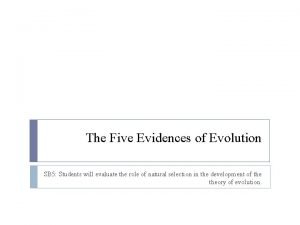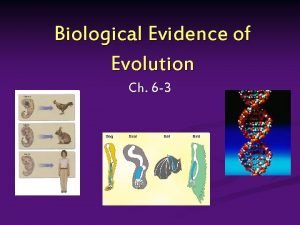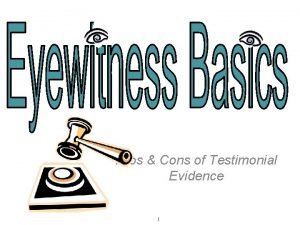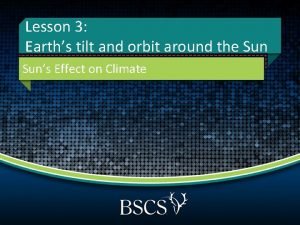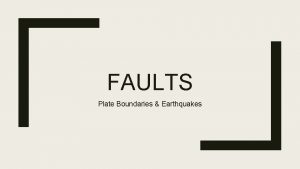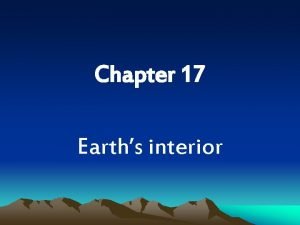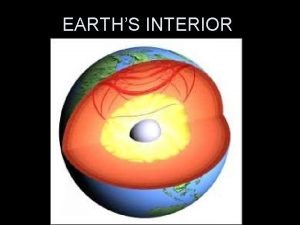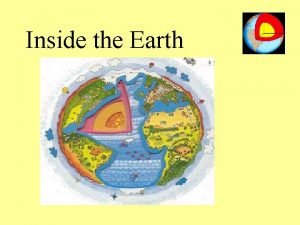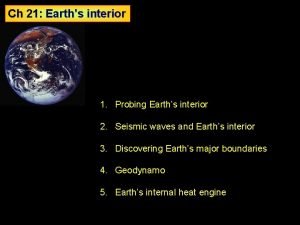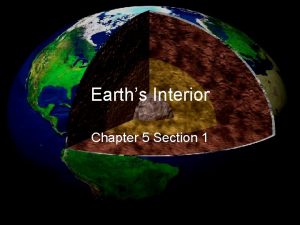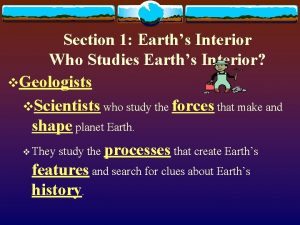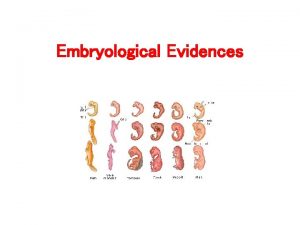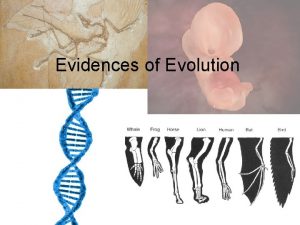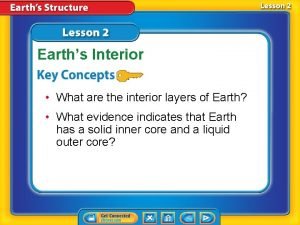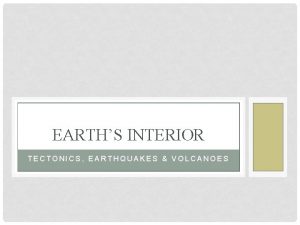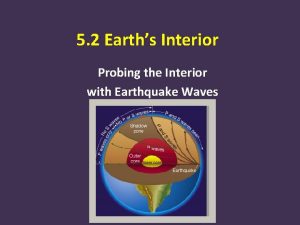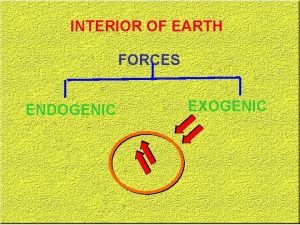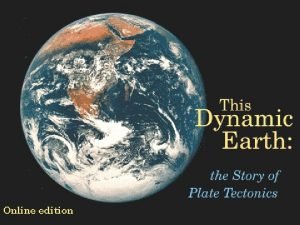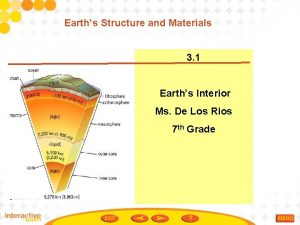Earths Interior Contents 1 Evidences of earths interior
























- Slides: 24

Earth’s Interior

Contents 1. Evidences of earth’s interior 2. Structure of the earth’s interior

Why know about Earth’s Interior • To understand Volcanism, Earthquakes and various other geophysical phenomenon • To undertand the internal structure of other Solar System objects • To understand the formation of atmosphere and its present composition • Mineral Exploration

Things that we know about Earth’s Interior • Earth’s interior is a heterogeneous medium • Earth’s interior consists of several concentric layers of varying physical and chemical properties • Temperature increases with depth • Density of the Earth’s interior increases with depth • Earth’s interior is divided into different layers namely 1. Crust Continental crust Oceanic crust Moho-Discontinuity (Mohovoricic Discontinuity) 2. Mantle Asthenosphere 3. Core Outer Core (Liquid) Inner Core (Solid)

Evidences about Earth's Interior • Evidence From The Meteorites • Volcanic eruptions, springs and gyesers • Behaviour of Earthquake Waves (Sesmic Waves)

Volcanic eruptions, springs and gyesers • High Levels of Temperature and Pressure Downwards The high temperatures are attributed to automatic disintegration of the radioactive substances

Evidence From The Meteorites • When they fall to earth, their outer layer is burnt during their fall due to extreme friction and the inner core is exposed. • The heavy material composition of their cores confirms the similar composition of the inner core of the earth, as both evolved from the same star system in the remote past.

Evidences from Earthquake waves • • 1. 2. 3. Earthquake waves give a much better picture about earth’s internal structure The earthquake waves are measured with the help of a seismograph and are of three types— the 'P' waves or primary waves (longitudinal nature), secondary waves or 'S' waves (transverse in nature) surface waves are long or ‘L’ waves (transverse in nature).

Primary Waves (P waves) longitudinal or compressional waves These waves are of high frequency short wave length They can travel in both in solids and liquids travels with fastest speed through solid and more dense materials In liquid materials, their speed is slowed down.

Secondary Waves (S waves) transverse or distortional waves analogous to water ripples or light waves A secondary wave cannot pass through liquid materials These waves are of high frequency, short wave-length waves travel at varying velocities (proportional to density) density The shallow zone of 'S' waves extends almost halfway around the globe

Surface Waves (L waves) Also long period waves. generally affect the surface of the Earth only and die out at smaller depth. The are low frequency, long wavelength, and transverse vibration develop in the immediate neighbourhood of the epicenter. These waves are responsible for most the destructive force of earthquake. recoded in the last at the seismograph. The L waves do not pass and do not go deeper inside the earth. 3 D view of P and S waves: https: //www. youtube. com/watch? v=2 Wlh 3 M 2 a 10 U

Behaviour of P and S waves while passing through earth’s interior


Behaviour of P and S waves while passing through earth’s interior

If earth was a homogeneous medium

Behaviour of P and S waves while passing through earth’s interior


Layers of the Earth The structure of the earth's interior is layered. It is made up of several concentric layers broadly three layers can be identified—crust, mantle and the core. Layers based on chemical and physical properties (1)crust, (2)mantle, and (3)core. Seismic Discontinuities • Mohorovicic Discontinuity (Moho) - separates the crust from the mantle • A soft asthenosphere (highly viscous, mechanically weak and ductile) • Gutenberg Discontinuity - lies between the mantle and the outer core


The Crust Continental Crust – 100 km thick; Oceanic Crust – 35 km thick It forms 0. 5 -1. 0 per cent of the earth's volume. Part of the Earth above the Mohorovicic (Moho) discontinuity. The outer covering of the crust is of sedimentary material (granatic rocks) and below that lie crystalline, igneous and metamorphic rocks which are acidic in nature. The lower layer of the crust consists of basaltic and ultra-basic rocks The continents are composed of lighter silicates—silica + aluminium (also called `sial—while the oceans have the heavier silicates—silica + magnesium (also called `sima'), which form a part of the mantle.


Mantle Moho-Discontinuity to the core. The depth of mantle varies between 35 km and 2900 km. The density varies between 2. 9 and 3. 3. The density ranges from 3. 3 to 5. 7 in the lower part. It is composed of solid rock and magma forms 16 per cent of the earth's volume. The outer layer of the mantle is partly simatic while the inner layer is composed of wholly simatic ultra-basic rocks.

Core lies between 2900 km and 6400 km below the earth's surface accounts for 83 per cent of the earth's volume. core has the heaviest mineral materials of highest density. It is composed of nickel and iron [nife] The outer core is liquid while the inner core is solid. a zone of mixed heavy metals + silicates separates the core from outer layers.

Thanks for Watching Please give your feedback and suggestions
 Where
Where The five evidences of evolution
The five evidences of evolution 6 evidences of evolution
6 evidences of evolution Biological evidence of evolution
Biological evidence of evolution Software program used to create facial composites
Software program used to create facial composites What makes one biome different from another?
What makes one biome different from another? What does earths tilt do
What does earths tilt do What is luna moon
What is luna moon Which layer of the earth slowly moves like putty
Which layer of the earth slowly moves like putty Atmosphere definition
Atmosphere definition Earth layers foldable
Earth layers foldable Brown earth soil ireland
Brown earth soil ireland Earths boundaries
Earths boundaries Most common elements in the earth's crust
Most common elements in the earth's crust Earths mantle
Earths mantle Earths early atmosphere contained
Earths early atmosphere contained Describe the true shape of earth's orbit
Describe the true shape of earth's orbit Earths roation
Earths roation Study of the earth's physical features
Study of the earth's physical features Earths 4 spheres
Earths 4 spheres Plasticity in earth's layers
Plasticity in earth's layers Earths crust
Earths crust Earths major crustal plates
Earths major crustal plates Earths layer foldable
Earths layer foldable Whats a natural satellite
Whats a natural satellite

